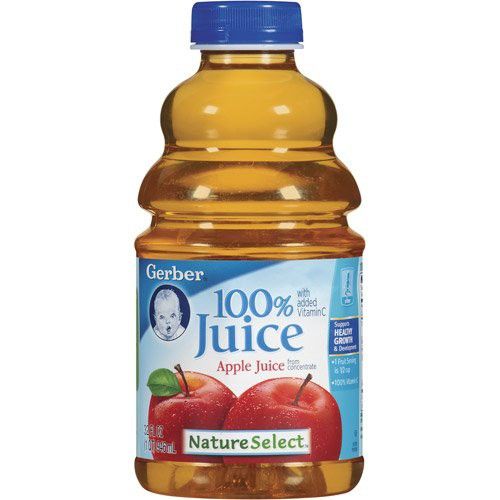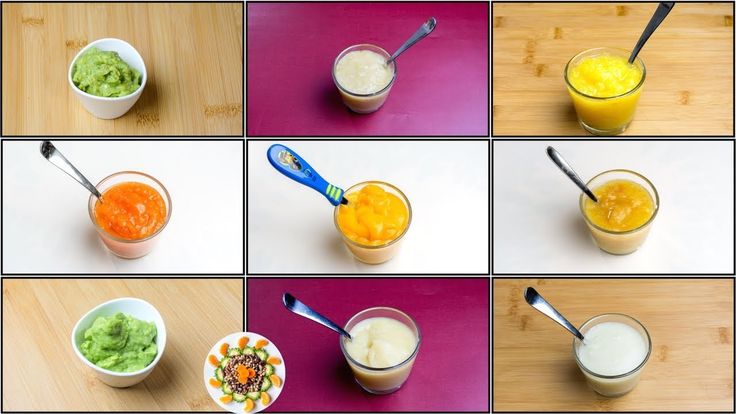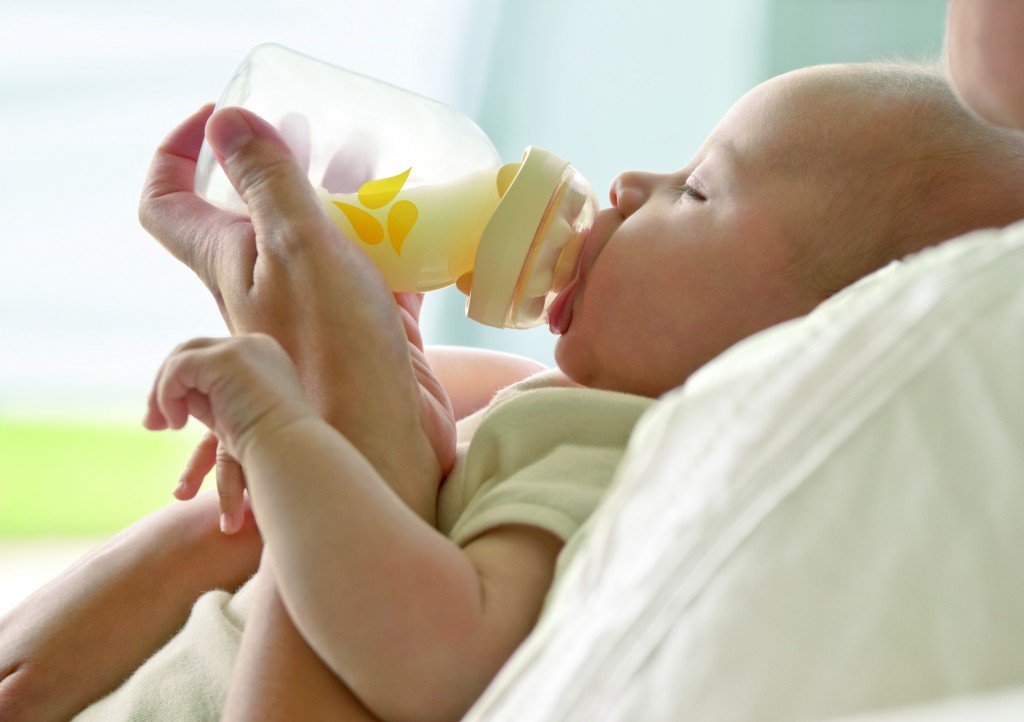Why wont my 6 month old eat baby food
What to Do When Baby Won't Eat Solids: 7 Simple Steps
When your baby won’t eat solids, it can be stressful. Learn why your baby is refusing food and how to get them to eat solid foods with 7 simple steps!
The spoon hits the floor.
Your baby makes a nasty face.
They might even shudder or gag.
All from a bite, or an attempt to feed your baby solid foods. It’s totally unexpected when babies respond with such disdain for baby food or table food. As parents, we’re often excited about this new milestone and it’s shocking when your baby won’t eat solids.
In real life though, it’s quite common for babies to gag on solids, seem uninterested, and outright refuse food.
While knowing it’s “normal” for babies to not seem interested in solid foods, even though everyone else’s baby seems to be gulping it down by the jar full, it still leaves the question, “How do you get a baby to eat solids?”
Well, I happen to know a thing or two about that. First, because I’ve personally helped a lot of families get their babies eating solids as a pediatric occupational therapist with over a decade of experience, but also because I’ve been there with my own son…
Going through it as a mom was a whole different ball game.
Of course, I knew that it was normal for babies to refuse baby food when it was first introduced, and I also knew that some babies didn’t much prefer baby food, but my Momma heart was worried. The worrying got worse when I watched my son act like he could’ve cared less about the delicious homemade sweet potatoes that I whipped up, as he turned his face away and threw the spoon across the room.
Meal after meal.
Day after day.
And, week after week.
With each passing day that he refused to eat solids, I got more worried, and more frustrated as I’d watch the food I’d prepared literally go down the drain. There came a point when I knew I needed to do more, to put some of my OT skills to use in my home, and that’s what I’m going to share with you here, because I know how stressful it is when your sweet adorable little baby won’t eat solids.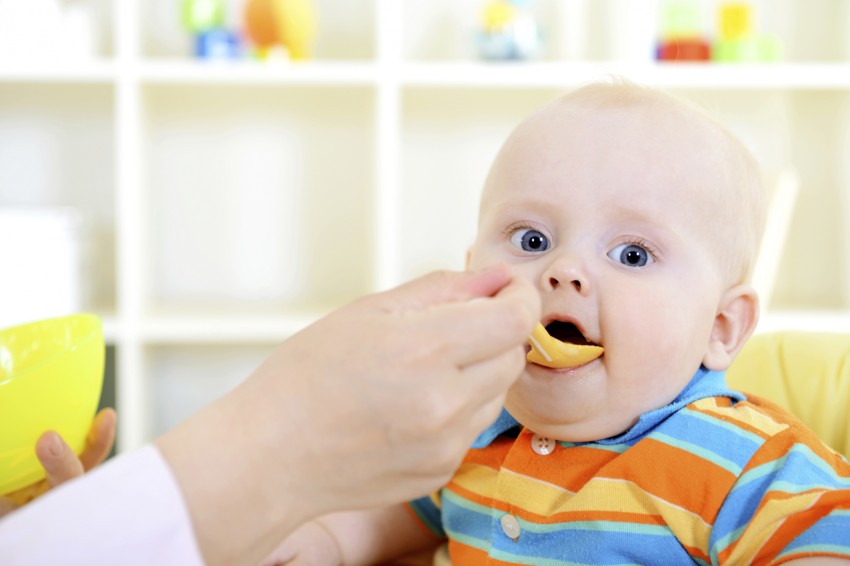
By the end of this guide, you’ll know :
-
- Why your baby is refusing solids
- Why they used to eat solids, but don’t anymore
- How to get them to eat solids and table foods
- Ways to get them more help (if you need it)
*Keep a look out for the free printable at the end too, if your baby is struggling with table foods!
Affiliate links used below. See our full disclosure.
Why Your Baby Won’t Eat Solids
There are a lot of factors that can actually play a role in any baby’s refusal to eat solid food. We’re going to walk through each of them below, but know that the reason your baby isn’t eating solids could be any one or combination of them. With a little detective work, you’ll figure it out!
Also, age has a little do with it, and will help you hone in on what’s going on.
6 or 7 Month Olds That Refuse Solids:
-
- Baby isn’t ready yet – 6 months of age is the perfect time to introduce baby to solid foods, but sometimes the baby isn’t ready.
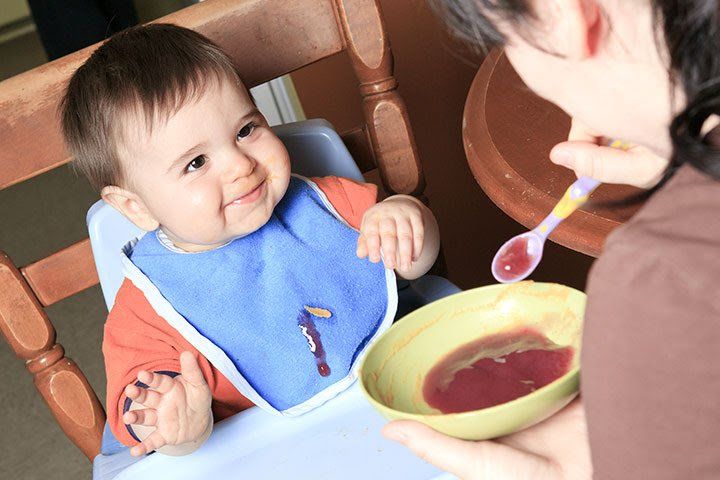 Actually, this is really common when the baby is closer to 4 and 5 months old if you’re starting a little earlier, but is still totally normal at 6 months of age.
Actually, this is really common when the baby is closer to 4 and 5 months old if you’re starting a little earlier, but is still totally normal at 6 months of age.
- Baby isn’t ready yet – 6 months of age is the perfect time to introduce baby to solid foods, but sometimes the baby isn’t ready.
Babies are still learning how to move their tongue and bring toys to their mouth, which helps them get used to having foreign objects in there. Each baby is unique and yours may just need some practice if they are in this age range.
They also may still be developing good trunk and head control, without it, eating is difficult!
Check out the American Academy of Pediatrics recommendations for introducing food and make sure your baby is ready for solids. You can also find my guide to Introducing Solids with more details on milestones to look for when 6 months old.
-
- A strong tongue thrust reflex – Most babies usually lose this reflex that helps them not choke if something accidentally gets into their mouth around 4-6 months, but it may linger for some.
If you notice that your baby still thrusts their tongue out every time you touch the spoon to their lips, they may need a little more time.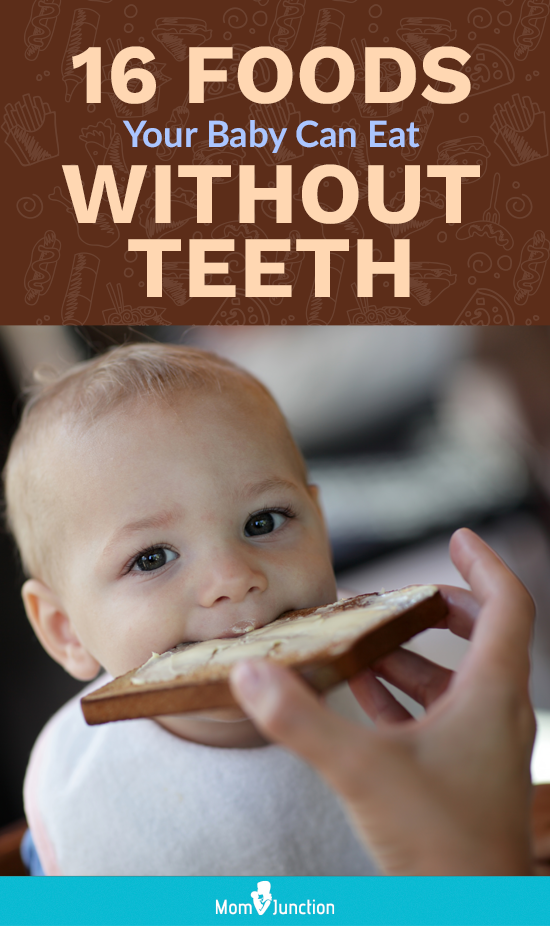 It’s really hard for them to eat when they keep shoving their tongue out of their mouth!
It’s really hard for them to eat when they keep shoving their tongue out of their mouth!
-
- Doesn’t like the way food feels – Solid food is something so new and unfamiliar to babies, it can take a while for them to get used to the new texture in their mouth. Many babies do in fact get used to the feeling of solids, but some don’t.
Read more about that below under sensory.
8, 9, or 10 Month Olds That Refuse Solids:
-
- Sensory – By 8 months of age, most babies are ready from a developmental standpoint, and at this age, it’s definitely time to get the ball rolling, but some babies (like my son) still refuse. One of the most common reasons why older babies still won’t eat solids is because they don’t like the texture.
This boils down to the way their brains are thinking about (or processing) the sensory input they feel (aka the food in their mouth).
This isn’t a bad thing and doesn’t necessarily mean they have any kind of diagnosis, but it does mean we need to take some extra steps to help them tolerate the texture of food better. You can head to sensory issues with food to learn more.
You can head to sensory issues with food to learn more.
Babies that are sensitive to different textures usually gag immediately at the sight, touch, or taste of food.
-
- Coordination – Eating actually requires a lot of muscle coordination from opening the mouth, pulling food off of a spoon, closing the mouth, and effectively swallowing.
We take this for granted and don’t even think about it, but for some babies, it just isn’t coming natural.
Babies that are having difficulty with coordination, or oral motor skills (find exercises with that link,) usually gag when trying to swallow or after getting the food into their mouth.
Or, the food may fall out frequently, and babies won’t eat solids because they just don’t know how. When they don’t know how to eat, it isn’t that fun, and there isn’t a lot of interest.
If gagging is something you’re concerned about or is happening often, read more in guide on baby gagging.
-
- Food allergies – Believe it or not, sometimes babies will avoid certain types of foods because they’ve associated an upset tummy with the yogurt or cheese for example. It doesn’t happen all the time, but it’s something to consider, especially when it’s very specific allergenic food.
The most common types of food allergens are dairy, egg, soy, wheat, tree nut, peanut, fish, and shellfish. Severe eczema is another indicator that food allergies might be present.
Sometimes, signs become more obvious when cow’s milk is introduced.
-
- Not into baby food – While this is probably the least likely reason your baby is refusing solids, it is possible.
If you’ve consistently offered baby food or infant cereal with no interest from your baby and you don’t see any of the sensory or coordination signs we talked about above, then you might just might want to move on to table and finger foods.
One way to do that is using a Baby Led Weaning approach, before you do that though read my BLW pros and cons.
*Get a seat in my free workshop and learn 5 big feeding mistakes that might be stopping your child from learning to eat. We’ll send you a free workbook too!
Why Baby Won’t Eat Solids Anymore (They Used to?)
-
- Some teething babies won’t eat – While it’s not as common, some babies start off eating baby food and then suddenly stop. A frequent cause of this is teething, and some babies teethe for a very. long. time. If your baby’s teeth are swollen, red, and seem to hurt, then this is likely the cause.
Try putting some teething gel on their gums 15-20 minutes before a meal. If you see an improvement, this is likely the culprit. Here’s a natural teething gel I like, but check with your doctor first.
-
- Going through a phase – Babies may get a little bug or slight cold that we aren’t even aware of or have some negative experience with food that seemed too minor to us as the parent, but makes them leery of eating.
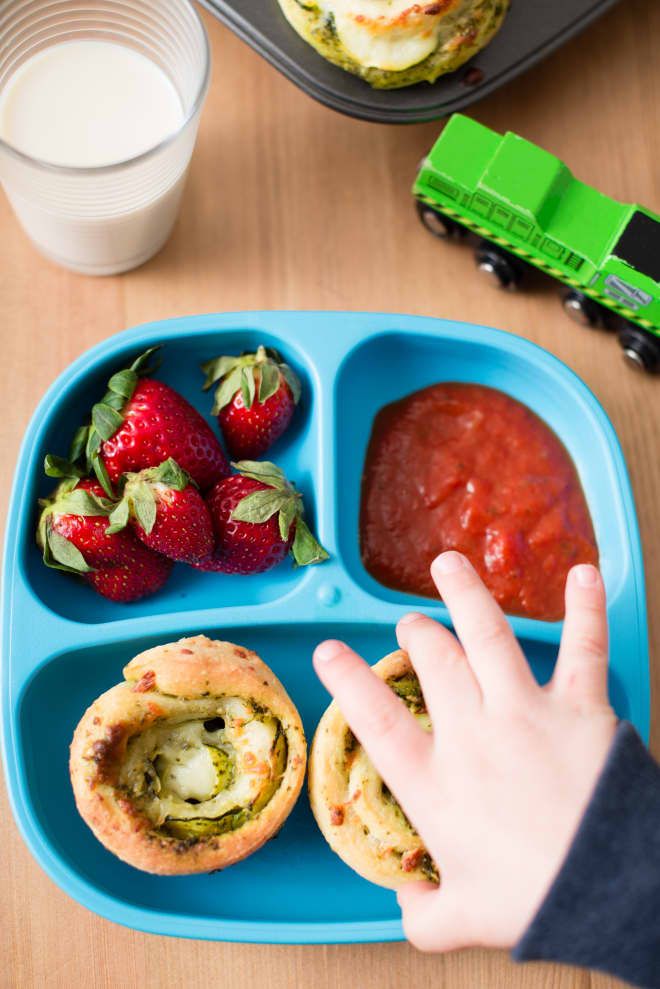
- Going through a phase – Babies may get a little bug or slight cold that we aren’t even aware of or have some negative experience with food that seemed too minor to us as the parent, but makes them leery of eating.
If it’s the latter, some sensory sensitivities can develop if a baby goes for a while without eating any food. If this is the case for your baby, you’ll want to follow the steps below and focus on not pressuring your baby to eat. It’s really important that mealtimes are a positive experience.
-
- They’ve outgrown baby food – If your baby is later in their 7th month or older, they may just be sick of solid baby food and ready for the real deal table and finger foods. That may mean it’s time to change up baby’s diet!
I know that seems scary and makes some parents nervous. Don’t worry though, if you think this is why your baby suddenly won’t eat solids anymore, then head to how to transition to table foods.
How to Get Your Baby to Eat Solids
1. The absolute first thing I do with a baby not eating solids is to put a scoop of baby food or some other pureed food like yogurt onto the tray of their high chair.
I know, the mess. It’s soooo important for babies to get messy though! If you’re skeptical, you’ve got to read: Why Babies Should Get Messy Eating. It will totally change your perspective and give you the inspiration to embrace the mess.
2. Encourage your baby to touch the food, but don’t force. Be silly and keep it light. Demonstrate.
If they refuse, try and try again. In fact, at every single meal, put a dollop of that food on their tray or even in a bowl that they can play with and touch. If they won’t touch after a few attempts, offer a spoon for them to stick into the food too.
This is one of my favorite beginner spoons that makes it really easy for baby to get some food onto it.
3. Once your child touches the solid food, you’re on your way! Allow them to touch, spread, and put it all over the tray and themselves. This is wonderful for their sensory processing and will make a huge difference in helping them get used to the texture of solids.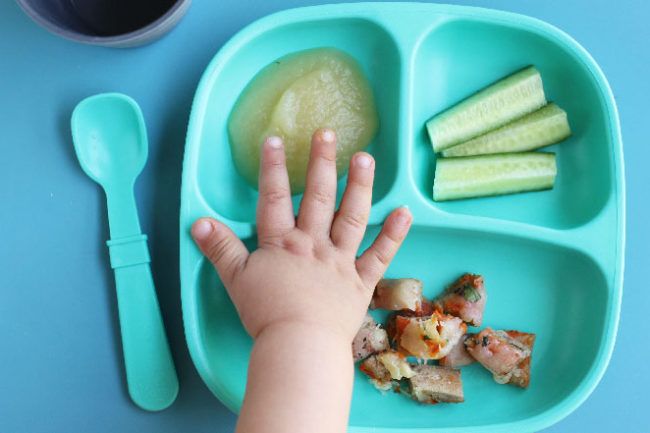
If they get upset once they’ve touched the food, or that they are now all messy, be very calm and reassuring.
Have a wet washcloth ready and quickly wipe them down. And, if this is how they respond, it’s a sign that you need to practice playing with these foods a lot! The more they touch and interact with the food, the closer they’ll be to eating it.
4. When baby has the food on their hand and they’re at least tolerating it, show them how to take their hand to their mouth, so they can taste it. You may need to demonstrate if baby won’t let you guide their hand.
Repeat this several times. After they eat from their hands several times, offer them some solid foods from a spoon.
5. You can also give them a large whole raw carrot or celery stalk at meals. I mean the whole darn thing. The point isn’t for them eat it (and if they can get pieces of it off, take it away), but for them to put it into their mouth.
When they do this, it helps desensitize their gag reflex and they get to practice biting, chewing, and moving their tongue around. It’s amazingly powerful and can make a big impact in a baby accepting solid foods. Make sure you demonstrate and keep offering at every meal.
It’s amazingly powerful and can make a big impact in a baby accepting solid foods. Make sure you demonstrate and keep offering at every meal.
6. Be consistent and patient. I can’t stress this enough, even though it’s often easier said than done! Have regular meals and follow the above steps 1-3 times a day for every meal. You can find sample schedules for babies ages 6 – 7 months, 8 – 10 months, and 11 -14 months if you’d like a guideline to follow.
7. Focus on meals being positive experiences for the baby, even if they aren’t eating anything. As parents, we can bring a lot of stress with us to meals, which can be hard to hide. But, this is definitely a “fake it til you make it” kind of situation.
Take a deep breath, put on a happy face, and work on the above steps. Going into the meal with no expectations of them eating anything will also help keep your frustration level down.
To learn MORE, grab a seat in my free online workshop.
In it, you’ll learn 5 big feeding mistakes that are stopping your baby or toddler from learning to eat table foods! It’s an eye opener and will help you take steps to give them the best start with eating table foods well (even if it already isn’t going well):
Strategies to Use Outside of Meals for Baby’s Refusing Solids
There are a few really powerful strategies you can use away from the highchair that will directly impact your baby eating solids during meals. Might seem strange, but if you suspect your baby is refusing because of sensory or coordination difficulties, doing these activities can be total game changers:
Might seem strange, but if you suspect your baby is refusing because of sensory or coordination difficulties, doing these activities can be total game changers:
-
- Brush their teeth – If you haven’t started yet, brush their teeth, and when you do, make sure you’re getting all over their gums and the sides, as well as the top of their tongue.
It only takes a few seconds, but it helps to both desensitize their mouth and improve coordination because the tongue gets practice moving in different directions. If your baby doesn’t like it, take it slow, and try often.
The more often you brush, the bigger the effect. Try for one to three times a day, and consider a vibrating toothbrush (yes, even for babies) for more powerful input in their mouth.
-
- Play in sensory bins – That may be a new term to you or you might be wondering what the heck that has to do with eating, but playing in different textures is super powerful and helps the sensory system understand different textures better.
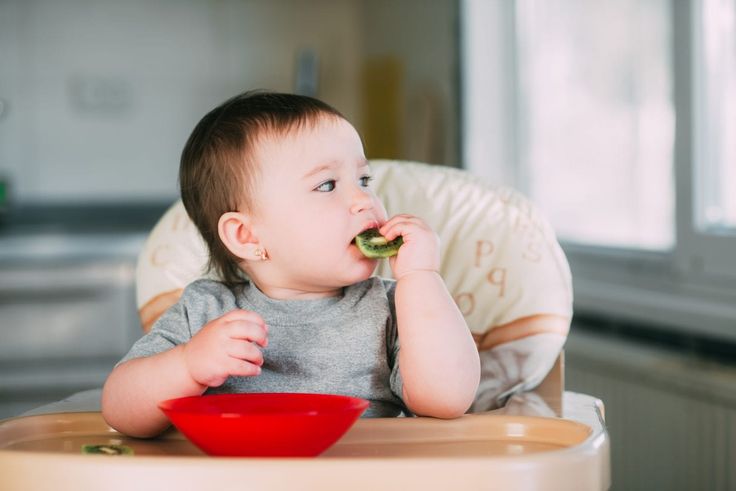
- Play in sensory bins – That may be a new term to you or you might be wondering what the heck that has to do with eating, but playing in different textures is super powerful and helps the sensory system understand different textures better.
This correlates directly to eating. I can’t tell you how many times I’ve seen a kiddo that plays in sensory bins frequently, suddenly start eating more foods (my son included). Head to Sensory Bin Ideas to learn how to set one up.
-
- Chew on toys – So many babies that won’t eat solids never put toys or teethers in their mouth, which is really easy to overlook. If this is your baby, pull out a bunch of different teethers and have them around the house.
Demonstrate. Dip them in food or juice. Play with them in the bath. The more often they get teethers and toys into their mouths, the more it will help improve the coordination their mouth muscles need to eat and desensitize their gag reflex and sensory system.
I really love this teether because it gets in the back of the mouth and this one vibrates (all my friends get it from me at their baby shower).
Help for the Baby Not Eating Food
I’m not just talking about solid baby food or purees. You may have a baby that won’t eat any type of food, like puffs, cut up fruit, or toast. They’re getting older and older. You’re getting worried.
You may have a baby that won’t eat any type of food, like puffs, cut up fruit, or toast. They’re getting older and older. You’re getting worried.
Following the above steps will be incredibly important for your babies too, especially the strategies for outside of a meal. But, you’ll also want to use the steps I outline in getting your baby to eat table foods.
That’s a whole different animal all within itself, and there are some targeting tips that can make all the difference in your baby eating food.
You’ll want to focus on small pieces, and by 9 months of life be attempting table or finger foods.
While I don’t want you to worry, I know it’s tempting to keep waiting it out, and unfortunately, some doctors advise this quite often. This often does not help your baby to learn to eat wide variety of foods.
Babies instinctively learn to chew between roughly 8 and 11 months of age, when they move past that, it can be much harder for them to accept foods. It’s not impossible, and the same steps apply for older children, but it’s much better to be proactive then taking a “wait and see” approach.
It’s not impossible, and the same steps apply for older children, but it’s much better to be proactive then taking a “wait and see” approach.
Puffs, lil cheese curls, and baby mum mum’s are all great for baby’s first foods.
When to Get More Help for a Baby Not Eating Solids
If your baby doesn’t like solid baby food and won’t accept any table foods of finger foods by 9 months old, it’s a good idea to get an evaluation either from the free early intervention program in your state or from a feeding therapist.
You can also read more about typical feeding milestones for babies just to have a reference point. As I said earlier, all babies develop at a different pace and needing a little more help is very common.
Get My Free Printable: Learn to Eat Table Foods Cheat Sheet
There seem to be more questions than answers when you’re under the daily stress of your baby or toddler not eating table foods. Not to mention all of the well-intentioned bad advice that’s often given. Let’s clear that up.
Let’s clear that up.
I’ve created a free 5 page guide that clearly lists the steps to teach your baby or toddler to eat table or finger foods, plus a FAQ guide for parents to ease their worries when their babies won’t eat!
Get your free Learn to Eat Table Food Cheat Sheet printable here!
More on My Baby Won’t Eat Solids
How to Teach Your Baby to Self-Feed
Mega List of Table Food Ideas
How to Teach Your Baby to Drink from a Straw
The Best Mealtime Utensils and Tools for Babies
Click here to Pin This! (You’ll have as a quick reference)
Alisha Grogan is a licensed occupational therapist and founder of Your Kid’s Table. She has over 17 years experience with expertise in sensory processing and feeding development in babies, toddlers, and children. Alisha also has 3 boys of her own at home. Learn more about her here.
8 Secret Strategies for Sensory Food Aversions in Kids
Why do children have sensory food aversions? And, how can you help them overcome sensory issues with food? Get the answers and 8 simple strategies…
From the very beginning of Your Kid’s Table, I have always wanted to help parents better understand sensory processing and anything related to kids and eating.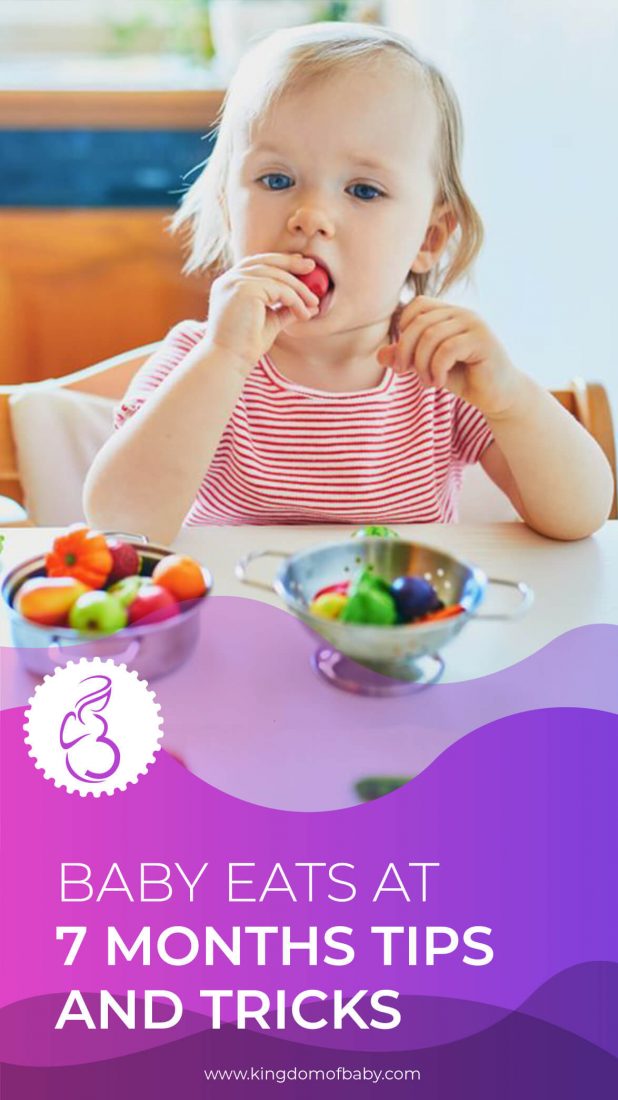 Over the last few years, I have answered many comments about how the two things are related, and often result in a sensory food aversion.
Over the last few years, I have answered many comments about how the two things are related, and often result in a sensory food aversion.
I wanted to dedicate a post completely to sensory issues with food, to help you understand if sensory processing is playing a role in your child’s picky eating and, perhaps more importantly, what you can do help!
I first noticed my son’s sensory issues with food when I introduced food to him, I knew the red flags (you’ll read about those later), and if I hadn’t introduced specific sensory strategies to help him learn to eat foods, we’d likely still be struggling, years later, because a sensory food aversion is on a whole different level than just your average “picky eating”.
Why Do Kids Have Sensory Issues with Food?
To understand food related sensory issues, we’ve first got to talk about sensory processing, which is our ability to interpret smells, tastes, sounds, touches, sights, and movement from our environment. Although most of us process this information in similar ways, it is completely unique to every individual, to every child. We are bombarded all day long with various sensory input, and eating, which many of us do 5 or 6 times a day, is a huge sensory experience that most of us take for granted.
We are bombarded all day long with various sensory input, and eating, which many of us do 5 or 6 times a day, is a huge sensory experience that most of us take for granted.
As adults, we have been quite desensitized to the textures, flavors, and smells of food, but many of our kids have not. In the first few years of life, mealtimes are all about processing the sensory input they are receiving from various foods. Often, when kids display picky eating, especially those with food aversions/extreme picky eating, the touch, taste, or smell of a food is being processed in their brain as dis-pleasurable in some way. And, by dis-pleasurable, I mean down-right uncomfortable. Think of something that makes you shudder… nails on chalkboard or touching a slug? That feeling that you have may be just as extreme for your child when they touch an orange.
How your child responds to foods, may at least in part, be simply neurological. I hope that this information helps you as the parent depersonalize the refused dinners, at least at little, anyways!
Here’s the good news, children’s brains are extremely plastic. Meaning they are able to easily learn new things. When a child learns something new or experiences something differently, a new connection is made in their brain. The more they have that same experience, the stronger that connection gets, and then they are able to react differently then they had previously because their brain is using a new connection to process the information.
Meaning they are able to easily learn new things. When a child learns something new or experiences something differently, a new connection is made in their brain. The more they have that same experience, the stronger that connection gets, and then they are able to react differently then they had previously because their brain is using a new connection to process the information.
Are you following me here? Let me say it another way by telling you about my son who has a long history of sensory food aversions. Isaac gags and shudders every time he touches chicken, but one day he helps me make chicken in a different way. We cut it into small pieces and serve it with a fun dip in a cool little ramekin. I pretend the chicken is little baby dinosaurs jumping into a pond of ketchup. Then, Isaac is really motivated and relaxed (because he isn’t being pressured), so he picks up his “little baby dinosaurs” and sends them soaring into his dip without a hint of a shudder or gag.
Guess what, his brain just made a new connection, and then I had a starting point to build from!
While I’ve mostly been providing examples of a child who is sensitive to textures because the brain is over processing the input, it is also entirely possible that your child may be undersensitive to sensory input. Think of sensory processing as a spectrum with being sensitive or defensive to input (texture, smell, etc.) at one end and seeking input at the other end with a whole lot of variability in the middle.
Not processing input well can also cause picky eating because children may not feel certain soft textures in their mouth well (as if the sensation is dulled), and thus avoid them. These kids, in particular, will often prefer crunchy foods, seemingly spit out soft foods, or over-stuff their mouths to try and “feel” the food.
*Note that sensory processing isn’t just related to food, head over sensory sensitivities in kids to learn more.
Does My Child Have a Sensory Food Aversion or Disorder?
While there is no specific diagnosis for a “sensory eating disorder” or a sensory food aversion, these terms might be used when your child eats a very limited amount of foods because they have difficulty with how foods smell, taste, feel, or even how they look. Remember this is because of the way their brain is interpreting the sensations they get from food, which leads to the question.
Remember this is because of the way their brain is interpreting the sensations they get from food, which leads to the question.
To help narrow down if your child’s picky eating is related to sensory, it’s first helpful to think about certain groups of kids that sensory processing difficulties affect more than other’s. I’m going to list them here because if your child has one of these diagnoses and has eating difficulties, it is very likely that sensory processing is at least part of the picture. But, having sensory processing difficulties in general DOES NOT mean that your child has one of these diagnoses. Got it? Good!
Kids that fall into one of these groups and are picky eaters, often have sensory based food aversions:
-
- Sensory Processing Disorder (Note that many health care providers acknowledge this diagnosis, but it is not in the current version of the DSM, which means some insurances providers will not accept this as a reason to justify therapy).
- ADD/ADHD
- Children Born Prematurely (The sensory system is one of the last to develop in utero, which is why sensory processing difficulties are common. However, this is not a rule. Many preemies display no difficulties in this area.)
- Autism Spectrum Disorder
- Down Syndrome
- Children Adopted from Orphanages in Eastern European Countries or Russia
- Sensory Processing Disorder (Note that many health care providers acknowledge this diagnosis, but it is not in the current version of the DSM, which means some insurances providers will not accept this as a reason to justify therapy).
So, how do those sensory “difficulties” actually show up in our kids when they are related to food, here are some specific red flags to look for…
Red Flags for Sensory Issues with Food
If you child has most or all of the behaviors here, it is possible that sensory issues with food may be part of the underlying reason your child is selective about what they eat. You will notice some opposite extremes in the list below, which are indicating different ends of the sensory processing spectrum as I discussed earlier. As you’re reading, make a mental checklist of any that you see your child doing regularly:
-
- Gags at the sight, smell, touch, or taste of foods.
Gagging while trying to eat is a different cause that has to do with the mechanics of eating. Gagging can also be a learned behavior that may have started from either a sensitivity to sensory input or difficulty chewing or swallowing food at some point. Read more on how to help with Gagging at the Smell of Food.
- Gags at the sight, smell, touch, or taste of foods.
-
- Eats only specific types of textures. Most of the time, the preference is crunchy foods, but sometimes soft foods are the preferred. This preference can even be carried over to highly specific requests of certain brands, colors, and flavors of food, feeding therapists call this a food jag.
-
- Avoids or dislikes their hands getting messy, and I’m not just talking about at meals. You will often see your child get uncomfortable with crafts or digging in dirt/sand, etc. (This is an important point, learn more about it in Everything You Need To Know About the Tactile Sense)
-
- Over stuffs or pockets food excessively and/or frequently.
Pocketing food can also be the cause of poor coordination and/or difficulty chewing.
- Over stuffs or pockets food excessively and/or frequently.
-
- Never went through an oral stage as a baby/toddler where they mouthed and chewed on toys and other objects.
-
- Excessively mouths and chews on various toys past the age of 18 months.
Find more sensory red flags that cover all the senses, not just related to eating. And, if you’d like to dive into understanding sensory as it relates to picky eating, head over to oral sensory processing, you’ll find more tips and activities there!
Are My Child’s Eating Difficulties all Related to Sensory?
I realize I just wrote over 800 words describing how sensory processing may be the cause of your child’s picky eating, but it is rarely the sole cause (have you notice I’ve been hinting about that). Picky eating is a complicated animal that often has many layers to it. Even if sensory processing is the major player, learned behavior and power struggles are most likely at play, too.
It is really important to make sure that you have a good routine and structure in place so that you are able to see the most improvement possible. See my Basic Strategies to Improve Eating and the plan I used to help my son for more strategies to help establish a consistent routine.
How to Get Help for Picky Eaters With Sensory Food Aversions
I want to provide you with some solid strategies to begin to improve your child’s processing of sensory information (and I will in the next section). However, there are more specialized techniques that may be appropriate under the guidance of a therapist. If your child is under 3 and you live in the US, you may qualify for free in home services. Another option is, a private evaluation from an occupational therapist that specializes in feeding and sensory processing may be appropriate. Read all about the ins and outs of feeding therapy.
Learn more about the basics of addressing picky eating. This is really important guys, don’t take this lightly! You will see so much more success with your sensory efforts if you put my 3 Keys to Turning Around Picky Eating in place. Discover what they are and how to use them simply in your home in my FREE workshop. Click here to save your seat!
Affiliate links used below. See our full disclosure.
Strategies for a Sensory Food Aversion
With that said, these few tools can be very powerful when used consistently over a period of at least 4-6 weeks because they help to desensitize the sensory system. Come back to these strategies as needed.
-
- Play in a variety of sensory bins at least 5-6 times per week.
-
- Use a vibrating toothbrush two times a day. My kids use these one’s all the time, but for smaller toddler mouths or those that are really sensitive, this brush is a great option.
-
-
- When brushing teeth, encourage your child to allow you to help, and brush the sides of the tongue top of the tongue and inside the cheeks as well.
-
-
- Build off of textures that your child is preferring.
Think about making small changes to the foods they already like by changing up the brand, flavor, etc. This will help build a bridge to new foods in a way that is comfortable.
- Build off of textures that your child is preferring.
-
- Encourage them to interact with the food in some way. Take baby steps. They may need to spend some time just touching the food to get used to the texture, for example.
-
- Cook together. This is a no-pressure time that allows kids to explore new foods. They will often feel brave enough to try something new in the fun and relaxed nature of the moment. Again, the key here is breaking down some of that sensitivity through the exploration of food.
-
- If your child falls into the over-stuffing/seeking texture category, you will want to alternate crunchy bites of food with soft food. You can also give the cheeks a firm, but gentle squeeze if the stuffing or spitting out starts, or briskly stroke from the ears to the mouth a few times.
This is not meant as a punishment, but to give input to help them process the sensation of the food better.
- If your child falls into the over-stuffing/seeking texture category, you will want to alternate crunchy bites of food with soft food. You can also give the cheeks a firm, but gentle squeeze if the stuffing or spitting out starts, or briskly stroke from the ears to the mouth a few times.
-
- Use these picky eater friendly foods for inspiration and motivation!
By implementing these strategies in combination with a solid routine, you will likely see some significant changes in your child’s eating. If you’d like a little help getting your routine rock solid so you can build on these other sensory specific tips, then grab this FREE 9 Tips to Improve Your Child’s Eating Printable.
More for Kids with a Sensory Food Aversion
The Best Picky Eating Strategy
What is a Sensory Diet?
Children’s Books to Help with Picky Eating
When Has Picky Eating Gone Too Far… Is it Something More?
Did you pin this?
Just hover over or tap any pic to get the pin it button to appear!
Alisha Grogan is a licensed occupational therapist and founder of Your Kid’s Table. She has over 14 years experience with expertise in sensory processing and feeding development in babies, toddlers, and children. Alisha also has 3 boys of her own at home. Learn more about her here.
What to do if the child does not eat vegetable purees
— Anastasia Ivanovna, why are vegetable purees useful for babies and why are they introduced into complementary foods?
— Complementary foods are the period of introduction into the children's diet of such products and dishes that will ensure its successful growth and development against the background of milk nutrition. The next goal is to replace one of the feedings with breast milk or formula.
Vegetable complementary foods are introduced so that the baby begins to receive vitamins and microelements not only from mother's milk (mixture), but also from other foods, and the digestive system learns to adapt to the digestion of new products.
— At what age do children get their first vegetable food?
- At each age, you need to focus on the degree of maturity of the digestive system and the nervous system of your child. It is important to know if he has developed chewing movements and gag reflexes in order to understand in what form to give puree. Food interest should also be noticeable - when the baby climbs into the parents' plate, asks for food or attracts a spoon to itself. Food interest appears in a window of 4 to 7 months.
The introduction to solid foods is pediatric complementary foods. On breastfeeding, they begin to feed vegetable purees a little later (after six months), on artificial feeding - a little earlier (closer to five months).
— What vegetable purees are there for children under one year old?
— Feeding vegetables is most often started with a one-component product in liquid form so that the child does not choke. It can be:
- marrow puree;
- broccoli puree;
- cauliflower puree.
Later they can be mixed, but first they introduce one kind of vegetable and look at the reaction of the body. The product is given once a day, and preferably once every three to four days, in order to clearly understand how the baby reacts to this type of complementary foods. A food diary will help.
Solanaceae - potatoes, tomatoes, eggplants, sweet peppers - are recommended to be introduced from 6-8 months and baked. They are difficult to digest, because the baby's digestive system is not yet fully formed. No need to prematurely load the child's body.
— What kind of puree is better for feeding: prepared by mom or ready-made, bought in a store?
- Disputes on this issue do not subside. Someone only cares about jars from stores, someone likes to cook at home. In fact, what mom was tuned in to is more correct. I am for ready-made baby food, because you can be sure of the consistency and quality of the product. We open the puree and understand that we will get the right product with a certain taste. Cotton at opening shows that the jar was stored correctly and the puree is suitable for consumption.
— You can often hear from parents that the child does not eat homemade puree or refuses puree from a jar. Why does the child not want to eat vegetable puree?
— Much depends on taste. The development of taste preferences begins long before birth. At the eighth week of pregnancy, taste buds begin to form in the fetus. The amniotic fluid has a taste, and when the mother eats something, the child will accept these foods well in the future. A lot of research has been done on this topic, based on the results of which recommendations are given on the nutrition of pregnant women.
- As for the type of vegetables, for example, potatoes contain a large amount of starch. And if physiologically the child's body is not ready to accept so much starch, then the baby will not eat such puree.
But I want to reassure moms. There is also pedagogical complementary foods, when the goal is not to feed, but to give a try to the product and thereby prepare the child for the perception of this or that complementary food. Here you can check whether a particular vegetable is suitable or not for the baby.
See also
- How to properly introduce vegetable complementary foods when breastfeeding or bottle-feeding.
- The child stopped eating vegetable puree, which he used to love. Is it possible?
— This happens even in adults, when we start consuming foods in one form or another. So, someone may not like boiled carrots, but they will like baked ones. The child will taste vegetables in the same way. And, for example, he will take a rather sweet pumpkin with great pleasure than an unleavened zucchini. But you need to remember that pumpkin puree is a more allergenic product, and it is better not to give it to the first complementary foods. Also, children perceive some polycomponent purees better. Everything is individual, you need to try and take into account children's wishes.
— Some mothers add potatoes pre-soaked in water to all mashed vegetables. Does this method work and is it safe for the child?
- Potatoes have a high glycemic index and increase blood sugar levels. Insulin is then produced to deliver glucose to the right cells. And if you add potatoes to all meals, you can bring down the hormonal system. Each product must be dosed.
The same applies to fruit purees. Only sweets are not recommended. Babies who start eating sweets earlier have a higher risk of developing type 2 diabetes and obesity later on. There are many nuances, and in adulthood they will overtake the child.
— What is the difference between vegetable cream soups and purees?
- Soups are introduced later, they differ in density and composition of the components. The child will most likely like the creamy consistency of the soup, and he will not even guess that it contains the same vegetables that mom tried to give in puree. In addition, the addition of milk or cream gives the product a more pleasant taste, including due to natural milk sugar. The child will eat cream soup with great pleasure.
As an example, I will give MAMAKO ® vegetable cream soups with goat's milk with pumpkin or spinach. Each product has a delicate texture without foreign inclusions, correct and uniform density. And since this is a goat's milk soup, it is very well suited for normalizing digestion and adapting the baby to an adult diet. The products include 13 vitamins and 7 minerals. Cream soup is diluted according to the scheme of preparation with warm water and does not require cooking, the baby easily absorbs all the nutrients from vegetable cream soup with goat's milk, which contributes to the formation of soft stools.
When starting to introduce vegetable purees, parents should be prepared for the fact that the child may refuse some product or be capricious due to digestive problems when adapting to the food entering the body. It is also important to pay attention to psychological factors - the formation of eating habits, the introduction of complementary foods in a calm atmosphere, so that food intake evokes pleasant associations in the child. If you refuse products, you can change the form of cooking, mix vegetables. However, do not rush, do not rush to give those products that the child's body is not yet ready to accept - be sure to focus on its age. Be patient and systematically try to diversify your baby's vegetable diet.
* Breast milk is the best food for babies. WHO recommends exclusive breastfeeding for the first 6 months of a child's life and continued breastfeeding after complementary foods are introduced until the age of 2 years. Before introducing new products into the baby's diet, you should consult with a specialist. The material is for informational purposes and cannot replace the advice of a healthcare professional. For feeding children from birth.
what to do at home and why it happens
Mothers, fathers, grandparents experience great anxiety when a child refuses to eat, especially if this does not happen from time to time, but constantly. The fidget has to be persuaded to eat an extra spoonful of porridge, come up with new, unusual dishes and games so that the baby leaves the table full. "Komsomolskaya Pravda" deals with the expert, because of what you should and should not worry and how to increase children's appetite.
How much a child should eat at different ages
There are nutritional standards developed by scientists (1). It is important for parents to know the recommended numbers, but following the norms for grams will be a big mistake. It is better to focus on the common sense, well-being and mood of the baby.
The volume of breast milk or formula for newborns in the first 10 days of life depends on weight. If the baby was born with a weight of more than 3200 g, he should eat a volume of milk per day equal to the number of days lived multiplied by 70 (2). A child 5 days old eats 350 ml. If the baby's weight was less than 3200 g, the number of days lived is multiplied by 80.
From 1.5 weeks to 2 months: WHO recommends 1/5 of the baby's weight as normal (3). That is, with a weight of 4 kg, he should eat 800 ml per day.
From 2 to 4 months, mother's milk and formula are taken in the ratio of 1/6 of the baby's weight. You can calculate according to the formula - weight in grams divided by height in cm and multiplied by 70.
Babies from 4-6 months old eat 1/7 of their own weight. For 6-8 months, the norm will be about 1000-1100 ml of food per day, and for 8-11 months - 1200-1300 ml.
From 1 to 2 years old, children usually eat 1300-1400 ml of food per day. After 2 years, the Union of Pediatricians of Russia advises parents to switch to a full three meals a day with two intermediate snacks (4). On average, a child of this age eats 1500 ml per day.
After 4-5 years, the amount of food increases to 2000 ml per day. It is recommended to distribute the calorie content of food as follows: breakfast - 30%, lunch - 35%, afternoon tea - 15% and dinner - 20%.
Nutritional norms for children at different ages according to WHO recommendations
| Age | Normal norm per day |
| from 1.5 weeks to 2 months | |
| from 4 to 6 months | 1/7 of the weight of the child |
| from 6 to 8 months | 1000-1100 ml |
| from 1 to 2 years | 1300-1400 ml |
| from 2 to 5 years | on average 1500 ml |
| older | on average 200119 |

